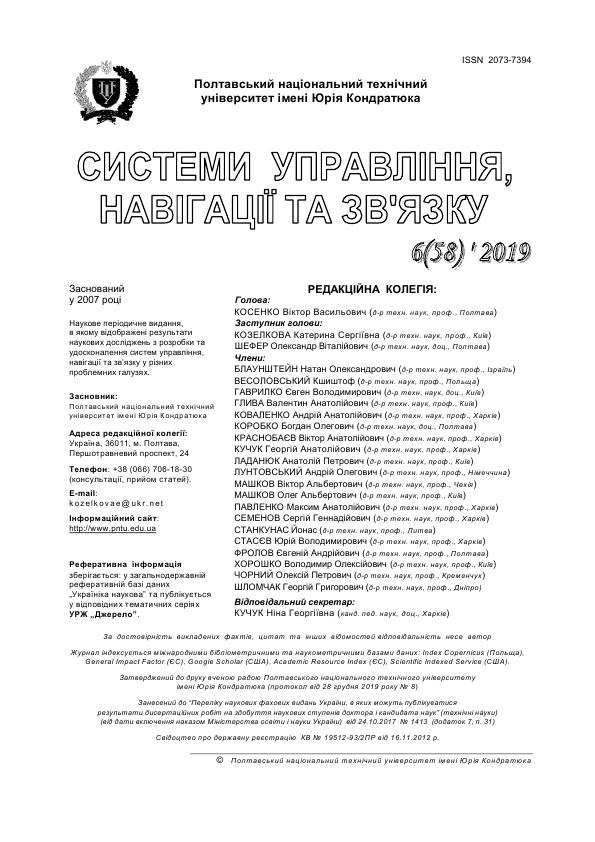THE RESEARCH OF MATRIX FACTORIZATION MODELS OF RECOMMENDATION SYSTEMS
DOI:
https://doi.org/10.26906/SUNZ.2019.6.058Keywords:
recommendation systems, matrix factorization, SVD, latent factors, gradient descent, forecastingAbstract
The subject matter of the article is the process of creating recommendation lists for website users. The goal is to research the existing matrix factorization models of recommendation systems. In recommendation systems, factorization is applied to a rating matrix in order to identify latent factors inherent in system objects that affect user preferences. Matrix factorization models of recommendation systems are very popular among developers and have many modifications. In this paper, the following models are considered: FunkSVD, SVD++, Asymmetric SVD, and timeSVD. Factorization models of recommender systems along with neighborhood models are used in collaborative filtering methods. Unlike neighborhood models, which use similarity coefficients for create lists of recommendations, factorization models do not use similarity, but latent factors. The advantages of such models are: increased robustness to attacks of profile-injection, in comparison with other models, and high accuracy in predicting user preferences. The disadvantages of the researched models include poor scalability, a long training time, and the need for a complete retraining of the system when new data appears, which is partially eliminated only in asymmetric SVD. The research showed that the existing matrix factorization models make it possible to use both explicit feedbacks from users (item ratings put up by users) and implicit feedbacks (views of items, comments, etc.), which allows to increase the accuracy of a recommendation system on web-resources where users give a lot of implicit feedback. This principle was first implemented in SVD++. Factorization models also allow taking into account non-periodic and periodic changes in user preferences over time, which, in particular, is implemented in timeSVDDownloads
References
“Recommender Systems Handbook” (2010) Editors Francesco Ricci, Lior Rokach, Bracha Shapira, Paul B. Kantor, 1st edition, New York, NY, USA: Springer-Verlag New York, Inc., 842 p., doi: https://doi.org/10.1007/978-0-387-85820-3
Jones, M. (2013) “Recommender systems, Part 1. Introduction to approaches and algorithms. Learn about the concepts that underlie web recommendation engines”, URL: https://www.ibm.com/developerworks/opensource/library/os-recommender1/index.html?s_tact=105agx99&s_cmp=cp
Meleshko, Е.V., Semenov, S.G., Khokh, V.D. (2018) “Research of methods of building advisory systems on the internet”, Academic Journal "Control, Navigation and Communication Systems", Issue 1(47), Poltava National Technical Yuri Kondratyuk University, Poltava, pp. 131–136, doi: https://doi.org/10.26906/SUNZ.2018.1.131 (in Ukrainian)
Krupnik, I. (1992) “Decomposition of a monic matrix polynomial into a product of linear factors”, Linear Algebra Appl, P. 239-242.
Funk, S. (2006) “Netflix Update: Try This at Home”, URL: https://sifter.org/~simon/journal/20061211.html
Cao, J., Hu, H., Luo, T., Wang, J., Huang, M., Wang, K., Wu, Zhonghai, Zhang, X. (2015). “Distributed Design and Implementation of SVD++ Algorithm for E-commerce Personalized Recommender System”, Communications in Computer and Information Science. 572. Springer Singapore. pp. 30-44. doi: https://doi.org/10.1007/978-981-10-0421-6_4
Jia, Ya. (2014) “Users' brands preference based on SVD++ in recommender systems”, IEEE Workshop on Advanced Research and Technology in Industry Applications. pp. 1175-1178. doi: https://doi.org/10.1109/wartia.2014.6976489
Koren, Y. (2008) “Factorization meets the neighborhood”, Proceeding of the 14th ACM SIGKDD international conference on Knowledge discovery and data mining, doi: https://doi.org/10.1145/1401890.1401944
Töscher, A., Jahrer, M., Bell, R.M. (2009) “The BigChaos Solution to the Netflix Grand Prize”, Netflix prize documentation, URL: https://www.netflixprize.com/assets/ GrandPrize2009_BPC_BigChaos.pdf
Koren, Ye. (2009) “Collaborative filtering with temporal dynamics”, Proceeding KDD '09 Proceedings of the 15th ACM SIGKDD international conference on Knowledge discovery and data mining, P. 447-456.
“Overfitting in machine learning: what it is and how to prevent it”, (2017) URL: https://elitedatascience.com/overfitting-in-machine-learning
Brownlee, J. (2016) “Overfitting and underfitting with machine learning algorithms”, URL: https://machinelearningmastery.com/overfitting-and-underfitting-with-machine-learning-algorithms
Neumaier, A. (1998) “Solving ill-conditioned and singular linear systems: A tutorial on regularization”, SIAM Review 40, P. 636–666.




